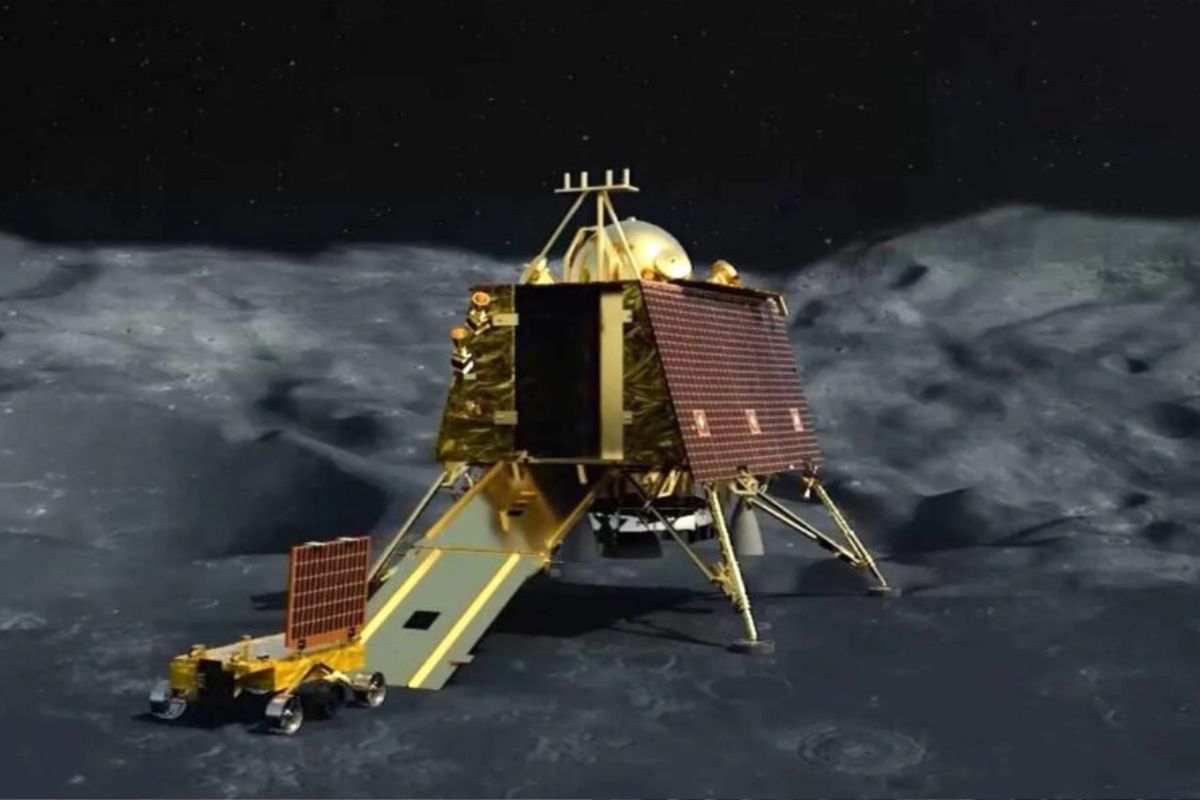ISRO: The Lander Module of Chandrayaan-3 has successfully initiated communication with the orbiter of Chandrayaan-2, the earlier lunar mission by the Indian Space Research Organisation (ISRO). This development is significant as Chandrayaan-3 is now on its way to achieve a historic “soft-landing” on the lunar surface. Chandrayaan-2, launched in 2019, had experienced a loss of communication from its lander despite successful orbit and de-orbit maneuvers while approaching the Moon.
Chandrayaan -3 establishes communication with CH-2 orbitor
The eagerly awaited moment of Chandrayaan-3’s landing on the Moon’s south pole is drawing near as the countdown has begun. With the successful completion of five orbit maneuvers and two deboosting maneuvers, Chandrayaan-3 has significantly reduced its distance from the lunar surface. The upcoming challenge is the actual landing, set to take place on Wednesday (August 23). ISRO has announced that the live broadcast of the landing will commence from Monday at 5:20 pm.
Taking to Twitter/X ISRO stated, “Welcome, buddy!’ Ch-2 orbiter formally welcomed Ch-3 LM. Two-way communication between the two is established. MOX has now more routes to reach the LM. Update: Live telecast of Landing event begins at 17:20 Hrs. IST.”
ISRO tweets on Chandrayaan-3 Update
On Thursday, the Lander Module comprising the Vikram lander and the Pragyan rover was detached from the Propulsion Module of the spacecraft. The Propulsion Module will continue to orbit the Moon for an extended period, and it carries an additional payload called the Spectro-polarimetry of Habitable Planet Earth (SHAPE). This attachment aims to conduct spectral and polarimetric assessments of Earth’s light from the moon’s orbit. In more straightforward words, SHAPE will analyze specific characteristics of Earth’s light emissions.
What will happen once Chandrayaan-3 lands on moon?
After the Lander Module safely lands on the Moon’s surface, the Vikram lander will initiate the deployment of its various payloads. These payloads encompass Chandra’s Surface Thermophysical Experiment (ChaSTE), which is designed for temperature and thermal conductivity measurements. Another critical payload, known as the Instrument for Lunar Seismic Activity (ILSA), will be responsible for monitoring seismic movements in the vicinity of the landing area. The Langmuir Probe (LP) will gauge plasma density alterations. Additionally, a passive Laser Retroreflector Array provided by NASA will facilitate studies involving lunar laser interactions.
On a different note, the rover Pragyan is equipped with an Alpha Particle X-ray Spectrometer (APXS) and a Laser Induced Breakdown Spectroscope (LIBS). These advanced tools are intended to analyze and identify the elemental composition of the surrounding area at the landing site.
Keep watching our YouTube Channel ‘DNP INDIA’. Also, please subscribe and follow us on FACEBOOK, INSTAGRAM, and TWITTER.
